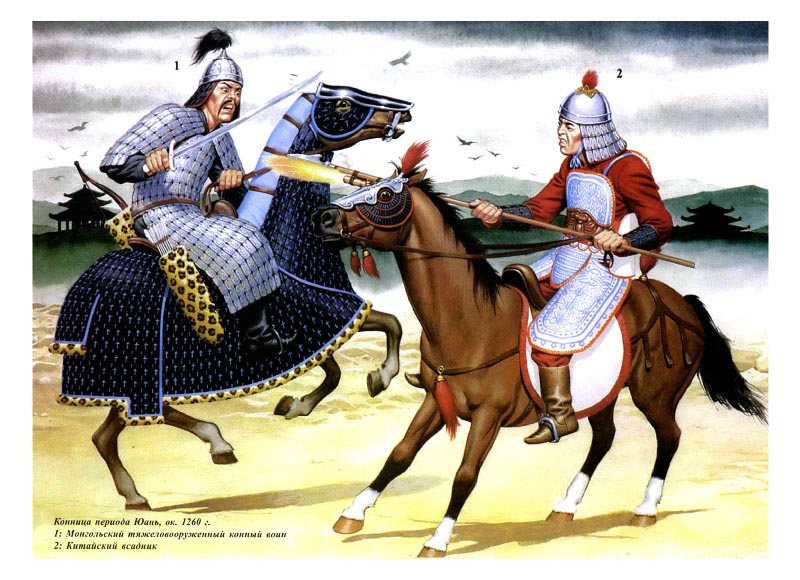The Mongol conquest of China began under Genghis and lasted quite a long time — from 1205 to 1279. Almost three quarters of a century.

The last chord of this dramatic history was the river battle at Yamen, during which the numerous fleet of the southern Chinese empire of the Song was defeated by the Mongol squadron. The ratio of ships in this battle was one to ten, but such a weighty preponderance of the Chinese did not help. This is to the popular misconception that the Mongols did not know how to water battles.
Under Yamen died Emperor Zhao Bin, and the country was decapitated, resistance finally ceased. The northern part with its separate emperor was demolished by the Mongols much earlier. And this, by the way, causes a lot of controversy about the moment from which to actually count the beginning of the Mongol yoke in Chinese history.
It is possible to take 1279, or 1234, when Northern China, which was a separate state, was conquered.
The yoke itself, which was established in China, was much more severe than in Russia. After all, Russia was an autonomy, where Mongols were almost never seen.
Yes, princes went to Karakorum, and then to Sarai. Yes, there were raids in case of disobedience. Yes, Baskaks came to collect tribute. In southern Russia, on the territory of which Ukraine is now, the situation was somewhat different — the Mongols held it much more firmly, and the Baskaks did not get out of the towns there until Lithuania came. But that is a separate story.
In China, so that you understand, the Mongols concentrated in their hands all the power. All key positions were occupied by Mongols, the Chinese were allowed only as advisors. The Mongols owned the land, the Mongols determined all foreign and domestic policy, the Mongols constantly raised taxes. The Chinese themselves were put in the position of a discriminated category of people in their own country.
The British rule over India can be cited as an analogy.
In general, all this was bound to lead to a social explosion, because the situation was completely intolerable. And the explosion happened.

The torch to the powder keg was carried by the secret Buddhist organization “White Lotus”. First, the prediction “The Stone One-Eyed Man will disturb the Huang He, and the Celestial Empire will rise” was thrown into the nation. And then surprisingly, at the end of May 1351, peasants discovered just such an idol. For the most confused, an inscription was carved on his back: «This is a stone one-eyed man. As soon as he is found, the Celestial Empire will rise.»
And the events began, which in Chinese historiography were called the rebellion of red bandages — its participants tied their heads with red handkerchiefs.
It did not turn out to be quick and easy, they had to fight for a long time. Very long. Mongols after the first confusion managed to organize themselves and went on the counter-offensive. The war dragged on for many years.
Seventeen years after its beginning Zhu Yuanzhang, one of the rebel leaders, a peasant’s son, declared himself emperor. By this time, he had managed to prove his commanding talents. Moreover, he had survived not only the fight against the Mongols, but also the wrangling between the red armband commanders themselves.
Chinese troops took Beijing in September 1368. The last Mongol emperor Togon-Temur fled north to the city of Shandu, and a year later — even farther to Yinchang, where he died in 1370. But this city too was soon lost.
The Mongols retreated deep into the territory of modern Mongolia. The Chinese tried to invade there as well, building on their success, but the descendants of Genghis fought back. The lands that remained under their control were called Northern Yuan.

This was the end of the history of Mongol rule over China.
